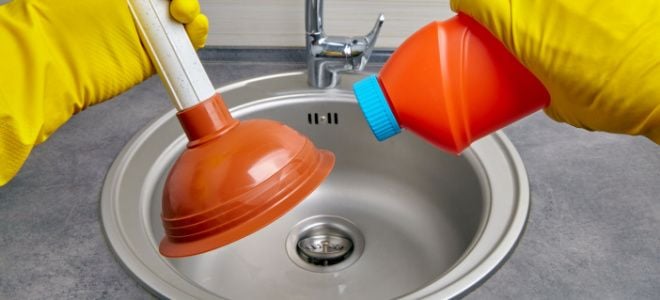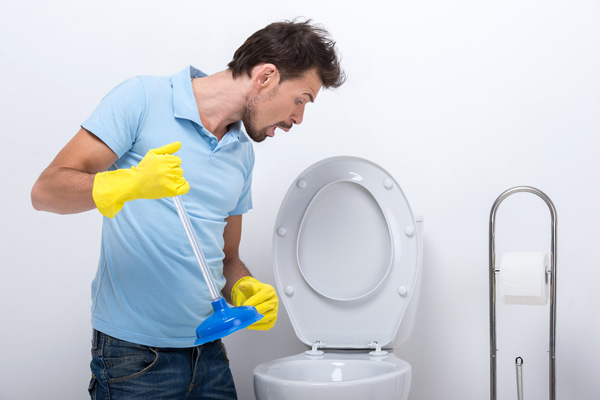Ways to Successfully Utilize Plungers and Drain Cleaners: Expert Advice
Ways to Successfully Utilize Plungers and Drain Cleaners: Expert Advice
Blog Article
Any individual seems to have their own unique thinking in relation to How to Use a Plunger to Unclog a Toilet or Drain.

Introduction
Appropriate maintenance of household drains is essential for preventing obstructions and making certain smooth water circulation. One of the key devices in every house owner's toolkit is the plunger, alongside numerous drain cleaners made to take on persistent blockages effectively. This write-up checks out how to make use of plungers and drainpipe cleansers effectively to maintain your drains moving freely.
Area 1: Understanding Bettors
Types of Plungers
There are numerous types of bettors readily available, each designed for various sorts of drains pipes and clogs. The most usual kinds include mug bettors, flange plungers, and accordion bettors.
How Plungers Job
Plungers work with the principle of developing pressure and suction to remove blockages. When effectively used over a drainpipe, they develop a vacuum cleaner that can take out particles or separate obstructions.
Selecting the Right Plunger
Selecting the appropriate bettor relies on the kind of drain and the nature of the clog. Mug bettors are optimal for sinks and tubs, while flange bettors are much better suited for toilets as a result of their style.
Common Blunders with Plungers
Staying clear of these errors ensures reliable plunging: improper seal around the drainpipe, insufficient pressure, and not clearing bordering particles.
Section 2: Making Use Of Plungers Successfully
Preparation
Prior to plunging, ensure the bettor covers the drain entirely and develops a tight seal. Clear any type of visible particles around the drain opening.
Strategy
Start with gentle diving activities to build suction. Rise pressure slowly, using a constant rhythm. Repeat as essential until the drain gets rid of.
Repairing Tips
If diving does not function, attempt adjusting the seal, using petroleum jelly for a far better seal, or making use of a various sort of bettor.
Section 3: Comprehending Drain Cleaners
Sorts Of Drainpipe Cleansers
Drain cleansers can be chemical or chemical. Chemical cleaners make use of solid chemicals to dissolve obstructions, while chemical cleaners make use of natural enzymes to break down raw material.
Exactly How Drain Cleansers Work
Chemical cleansers react with blockages to dissolve them, while enzymatic cleansers break down organic products like hair and grease without hurting pipes.
Security Factors to consider
Always put on gloves and eye defense when utilizing chemical drain cleansers. Make certain appropriate ventilation and adhere to maker directions thoroughly.
Eco-Friendly Alternatives
Think about utilizing vinegar and baking soft drink or enzyme-based cleansers for environmentally friendly choices that are much safer for pipelines and the setting.
Area 4: Making Use Of Drainpipe Cleaners Properly
Application Techniques
Pour chemical cleaners directly into the drain opening. Permit them to work for the recommended time prior to purging with hot water. Chemical cleansers must sit over night.
Preventative measures
Stay clear of mixing different sorts of cleaners, as this can generate hazardous fumes. Never make use of chemical cleaners along with a bettor, as splashing can take place.
Dealing With Persistent Clogs
For relentless clogs, think about using a plumbing serpent or calling a professional plumbing technician to prevent damage to pipes.
Conclusion
In conclusion, recognizing just how to utilize plungers and drainpipe cleansers efficiently is important for maintaining healthy and balanced pipes systems. By picking the right devices and techniques, property owners can deal with minor clogs and avoid significant plumbing issues down the line.
How To Properly Use A Plumbing Snake To Clear Drains
When any drain clogs in our home arise, we tend to gravitate toward the plunger and little else. In cases where the plunger and its vacuum-created pressure are not able to clear clogs, many immediately move to harmful chemicals or simply call their plumber to fix the issue.
we’re happy to help with all drain cleaning needs and concerns. This includes informing you on a few other home remedies you may have at your disposal for minor to moderate clogs, one of which is the use of a plumbing snake. Many people have never used one of these before – let’s go over the steps to take when your drain clogs and you have a plumbing snake available.
Attempt Plunger Use
The first step here, as we noted above, should indeed be to grab your plunger when you notice a drain clog and attempt to resolve it this way. If you’re unsure how to use a particular type of plunger, our plumbers can answer any questions you have. If this doesn’t do the trick, however, you move on to the snake.
Locate And Prepare Snake
A plumbing snake is a metal or plastic device that’s generally about a quarter of an inch thick. It’s design with significant extensions, meant to reach down into your clogged drain and push the clog out. Snakes also contain drain augers that will latch onto and push stubborn blockages.
If your plunger doesn’t clear a clog, locate your snake and bring it to the drain in question. We also recommend keeping a bucket nearby to collect the clog once you pull it out, plus we’d advise wearing goggles and possibly protective gloves.
Feed Snake
Once you’re ready to go, feed the snake slowly down the drain, using the crank device it comes with to keep it moving until it finds the clog. Once this happens, much of the clog will be latched onto the coil so you can pull it out, while the rest will simply break up and flow downward.
Detach Debris
Remove the snake slowly from the drain, and once you’ve done so, pick off any debris that’s stuck to the coil. This is another area where wearing gloves is a must.
Flush Drain
Finally, take a few minutes to ensure the snake has done its job correctly. If you’ve been using it on a toilet, flush the toilet a couple times and make sure everything flows well. If you’ve used it on a different drain, flush it with some room temperature water.
https://www.mybuddytheplumber.com/blog/how-to-properly-use-a-plumbing-snake-to-clear-drains/

Application Techniques
Pour chemical cleaners directly into the drain opening. Permit them to work for the recommended time prior to purging with hot water. Chemical cleansers must sit over night.
Preventative measures
Stay clear of mixing different sorts of cleaners, as this can generate hazardous fumes. Never make use of chemical cleaners along with a bettor, as splashing can take place.
Dealing With Persistent Clogs
For relentless clogs, think about using a plumbing serpent or calling a professional plumbing technician to prevent damage to pipes.
Conclusion
In conclusion, recognizing just how to utilize plungers and drainpipe cleansers efficiently is important for maintaining healthy and balanced pipes systems. By picking the right devices and techniques, property owners can deal with minor clogs and avoid significant plumbing issues down the line.
How To Properly Use A Plumbing Snake To Clear Drains
When any drain clogs in our home arise, we tend to gravitate toward the plunger and little else. In cases where the plunger and its vacuum-created pressure are not able to clear clogs, many immediately move to harmful chemicals or simply call their plumber to fix the issue.
we’re happy to help with all drain cleaning needs and concerns. This includes informing you on a few other home remedies you may have at your disposal for minor to moderate clogs, one of which is the use of a plumbing snake. Many people have never used one of these before – let’s go over the steps to take when your drain clogs and you have a plumbing snake available.
Attempt Plunger Use
The first step here, as we noted above, should indeed be to grab your plunger when you notice a drain clog and attempt to resolve it this way. If you’re unsure how to use a particular type of plunger, our plumbers can answer any questions you have. If this doesn’t do the trick, however, you move on to the snake.
Locate And Prepare Snake
A plumbing snake is a metal or plastic device that’s generally about a quarter of an inch thick. It’s design with significant extensions, meant to reach down into your clogged drain and push the clog out. Snakes also contain drain augers that will latch onto and push stubborn blockages.
If your plunger doesn’t clear a clog, locate your snake and bring it to the drain in question. We also recommend keeping a bucket nearby to collect the clog once you pull it out, plus we’d advise wearing goggles and possibly protective gloves.
Feed Snake
Once you’re ready to go, feed the snake slowly down the drain, using the crank device it comes with to keep it moving until it finds the clog. Once this happens, much of the clog will be latched onto the coil so you can pull it out, while the rest will simply break up and flow downward.
Detach Debris
Remove the snake slowly from the drain, and once you’ve done so, pick off any debris that’s stuck to the coil. This is another area where wearing gloves is a must.
Flush Drain
Finally, take a few minutes to ensure the snake has done its job correctly. If you’ve been using it on a toilet, flush the toilet a couple times and make sure everything flows well. If you’ve used it on a different drain, flush it with some room temperature water.
https://www.mybuddytheplumber.com/blog/how-to-properly-use-a-plumbing-snake-to-clear-drains/

Do you enjoy more info about Tips on How to Effectively Use a Plunger? Try to leave a comment directly below. We'd be glad to listen to your thoughts about this posting. We hope that you come back again later on. Sharing is caring. Who knows, you might be helping someone out. Thank-you for taking the time to read it.
Call Today Report this page